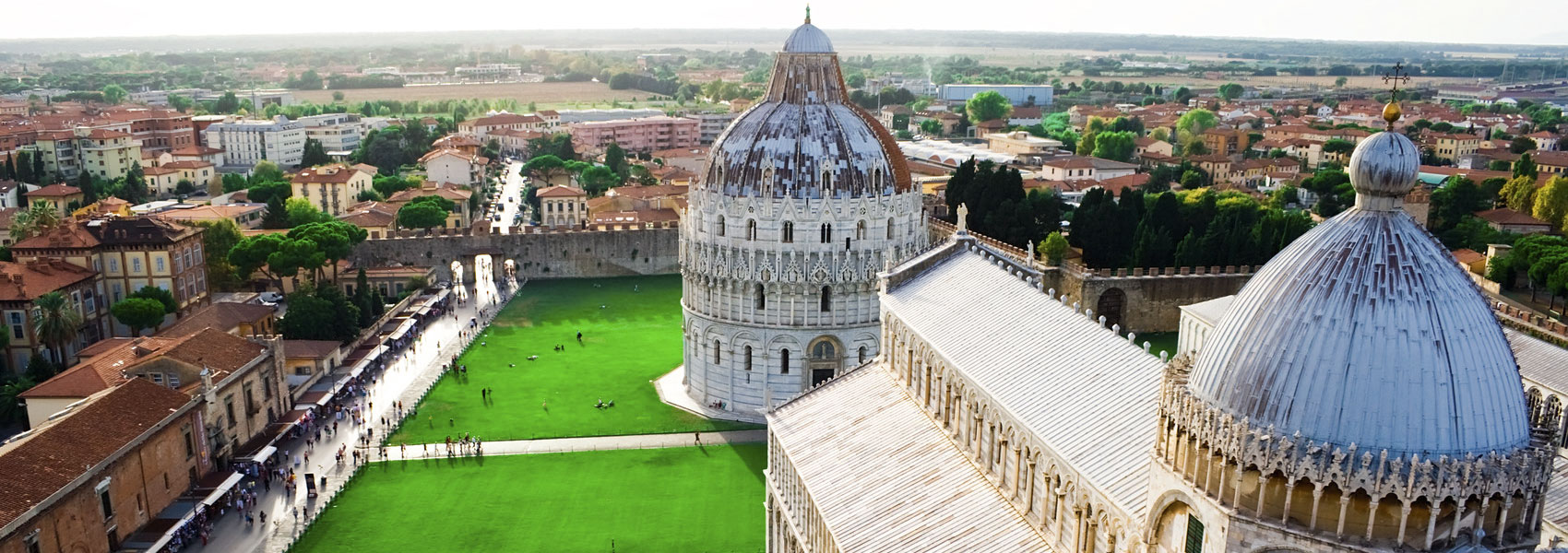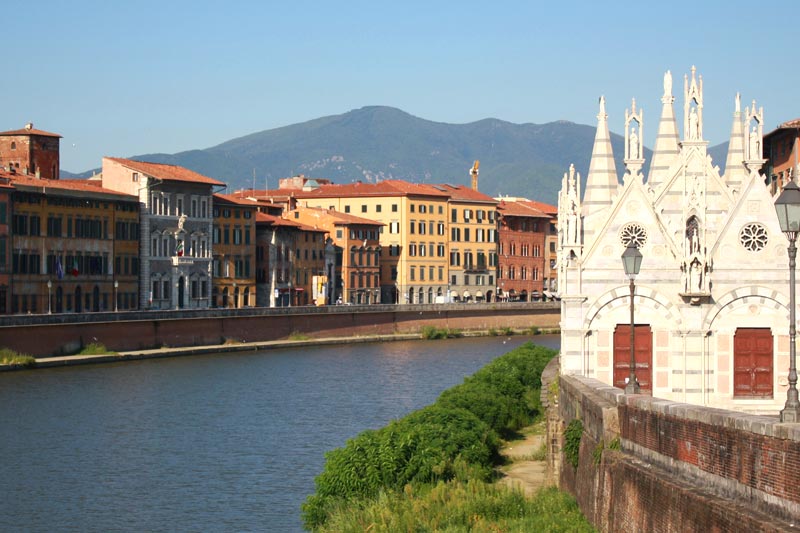
PISA
T
he city of Pisa, which is about 30 minutes by car away from Pietrasanta, is located on the shores of the Arno river, and is famous all over the world for the famous Leaning Tower.
Additionally it is also famous for having given birth to famous figures such as Galileo Galilei, the mathematician Fibonacci, the Nboel prize winner for physics Enrico Fermi and the tenor Andrea Bocelli, which was born near this fascinating city, and for its university, which is considered one of the oldest and most prestigious in Europe.
The city shows a very ancient history: it was founded as an Etruscan port around the middle of the VI. century and expanded until it became one of the most important fluvial ports in Italy during the Middle Ages. In the XI. and XII. century it was one of the famous maritime republics (together with Genoa, Venice and Amalfi). The Pisan fleet was considered one of the mightiest during the crusades and founded some colonies in Sardinia and even in the Middle East with the Byzantine empire, with which it had a long commercial relationship. Traces of this contamination, also artistically speaking, can still be found today in the museums of the city. The decline of the thriving maritime republic of Pisa began around the year 1200, and went on until the conquest of the city by the close town of Florence. During the renaissance, and particularly with Cosimo I de’ Medici, Pisa was reborn as well: incredible works of art were conceived in that time period, such as the Palazzo Reale, the church of Santo Stefano dei Cavalieri and the wonderful Piazza dei Cavalieri, which nowadays houses the Scuola Normale Superiore di Pisa, founded by Napoleon in the magnificent Palazzo dei Cavalieri. Just as famous is the Palazzo dell’Orologio, a work by Vasari, which decided to build it by uniting two existing towers. In one of the two towers was imprisoned the people’s captain Ugolino della Gherardesca, whose story is told by Dante Alighieri in the XXXIII verse of Hell.
Churches of big importance adorn this city: the church of Santa Maria della Spina for example is considered one of the most beautiful Gothic churches in Italy.
Certainly one of the most famous squares in the world is Piazza dei Miracle (or Piazza del Duomo), with its wide green grass which inspired the poet Gabriele D’Annunzio to the expression “Prato dei Miracle” due to its contrast between the white marble of the monuments and the bright green of the surrounding grass. The first monument built in this square was the Duomo, followed by the splendid Battistero and by the bell tower, the famous Torre di Pisa, which attracts each year millions of tourists from all over the world. This incredibly famous tower is the symbol of the town of Pisa, besides being one of the most recognised monuments in the world. Its characteristic leaning is not only due to the characteristics of the soil, but also due to a mistake in the project by the original architect. As of today there is a heated discussion about his name: for many years the project was attributed to Vasari or Bonanno Pisano, but the most recent theory attributes this building to Gherardo di Gherardo. What we know is that the tower was built around 1173 as a bell tower, and that after having realised his mistake, the architect fled without leaving any trace. Over the centuries many architects have tried to bring the tower back in vertical position, but no one had managed to do it. Only recently some specialised architects managed to stabilise the tower with advanced technological methods and even get back a degree of inclination, bringing it from 5.5% to 5.0%.
Nowadays it is possible to visit the Leaning Tower of Pisa and climb up to its top, to get a view from above over the wonderful Piazza dei Miracoli. On the northern side it is limited by the Camposanto Monumentale, which has incredibly valuable works of art, among which are marble structures, frescos and ancient sarcophagi.
Those who visit Pisa can not miss a walk on the Lungarni, the streets that follow the river, with its colourful ice cream shops, bars and characteristic cafés: it will be exciting to be transported away by the charm of the splendid buildings and surrounding palaces, as well as the beauty of the romantic bridges, which are part of the most characteristic images of Pisa.
We can say that Pisa is a city in which the splendour of ancient times blends in with the characteristics of a modern city with lots of students. It is a city that has a calendar filled with interesting events: from the traditional celebrations, such as the “Luminara” - which is held every 16th of June for the celebration of the patron of the city, San Ranieri, in whose honour over 100’000 candles decorate buildings and churches along the river Arno - and other medieval celebrations (such as the Gioco del Ponte and the Regata di San Ranieri), to events where modernity melts with a scenario of ancient beauty.
Do not miss visiting this fascinating city, climb up the most famous tower in the world, and let yourself be guided during the interesting tour of Pisa which we will be able to recommend you in cooperation with the knowledgeable tourist guides.






